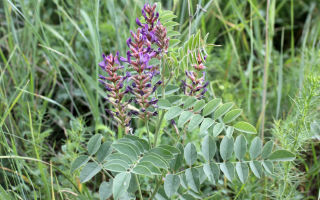Content
- 1 What does licorice look like and where does it grow?
- 2 Types of licorice
- 3 The chemical composition and caloric content of licorice
- 4 What is the useful and medicinal properties of licorice herb
- 5 How to take licorice
- 6 The use of licorice in cosmetology
- 7 Contraindications
- 8 Why is licorice in sweets and marmalade useful and harmful?
- 9 Collection and procurement
- 10 Conclusion
Licorice, also known as smooth licorice, is used medicinally. The active components of this plant are included in laxatives, diuretics and expectorant drugs. The benefits and harms of licorice should be assessed before starting medications or folk remedies made from the root. It is better to consume them after consulting a doctor.
What does licorice look like and where does it grow?
Licorice is a perennial herb. It belongs to the legume family, the genus Licorice. The name comes from the ancient Greek word "glukurrhiza", which means "sweet root".
The plant has several straight stems, they can be simple or slightly branched. In height, the ground part of the licorice rises by 0.5-2 m. The rhizome of the plant is thick, woody. It has 1 sheer root, penetrating into a depth of up to 5 m, and a horizontal network of 5-30 stolon roots. The length of each reaches 1-2 m, they are at a depth of 30-40 cm. Outside, the roots and rhizomes are brown, inside they are yellowish.
Licorice leaves are pinnate, grow up to 5-20 cm long. They consist of ovoid, whole-edged leaves with pointed tops. The surface is covered with punctate adhesive glands.
From June to August, licorice blooms. Peduncles grow 3-5 cm in length. Seed fruits ripen in September.
Due to vegetative propagation, licorice forms thickets that occupy large areas. At the end of the roots are buds, from which daughter plants are formed. Licorice is also propagated by seeds.
Licorice grows in the floodplains and valleys of semi-desert, steppe rivers, in meadows, along irrigation canals and roads. Licorice prefers solonetzic and sandy soils, therefore it is found in coastal zones on sandy shell shafts.
Licorice is grown on an industrial scale in the following countries:
- Afghanistan;
- Iran;
- India;
- Pakistan;
- Iraq;
- Azerbaijan;
- Turkey;
- PRC;
- Turkmenistan.
In the wild, licorice is found in Italy, France, the countries of Southeast Europe, Central and Western Asia, and North Africa. In Russia, licorice can be found in the southern regions of the European part of the state, in the North Caucasus and in Western Siberia.
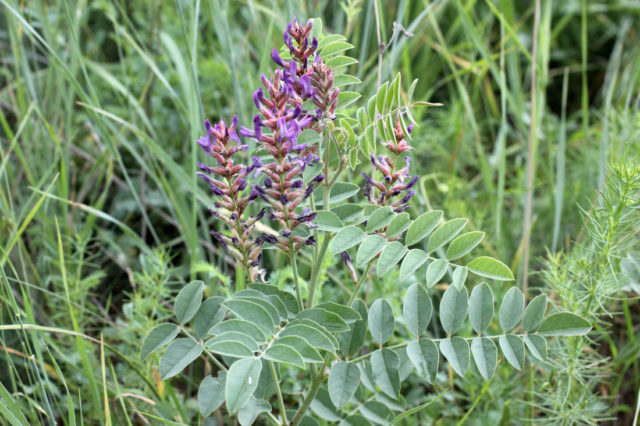
Types of licorice
Experts distinguish 2 varieties of licorice: Glycyrrhiza glabra var. Glabra and Glycyrrhiza glabra var. glandulifera.
But in Russia this herb is often called licorice. The specified genus includes more than 20 species. In addition to naked licorice (licorice), there are also varieties: rough, bristly, Bukhara, Goncharov, Korzhinsky, three-leafed, Macedonian and Ural.
Some of the plants are found in Russia. In the southern regions of the European part and in the Caucasus, mainly licorice grows, and in Western Siberia and in the south of the Urals - Ural licorice.
The chemical composition and caloric content of licorice
Roots are used in medicine and cooking. Other parts of the plant are not required. The beneficial properties of licorice root are due to its composition. During the research, it was found that this part of the licorice contains the following substances:
- carbohydrates and related compounds (maltose, sucrose, glucose, fructose);
- polysaccharides (pectin substances, up to 30% cellulose and up to 34% starch);
- organic acids;
- essential oil;
- resin;
- triterpenoids;
- steroids (β-sitosterol);
- phenol carboxylic acids;
- coumarins;
- flavonoids;
- tannins;
- alkaloids;
- alcohols.
The sweet taste of licorice root is due to the triterpenoid glycyrrhizic acid. Its content in the composition reaches 23%.
Caloric content of licorice is 385 kcal. The plant contains 3.7 g of proteins, 10 g of fat and 69 g of carbohydrates.
What is the useful and medicinal properties of licorice herb
The beneficial properties of licorice in China have been known for more than 2 millennia ago. Now it is used everywhere. For medicinal purposes, only the roots of the plant are used. The substances contained in them have the following effect on the body:
- mucolytic;
- expectorant;
- laxative;
- immunostimulating;
- bactericidal;
- wound healing;
- antitoxic.
Most often, licorice root is used as a treatment for respiratory diseases. It is found in many cough medicines. Studies carried out in 2003 showed that the agent has a negative effect on the SARS virus.
Licorice root reduces the severity of fermentation processes in the digestive tract. Means produced on its basis irritate the inner lining of the digestive tract, increasing the secretion of mucus. Therefore, licorice is included in the composition of diuretics, expectorants and laxatives. Prescribe medications with licorice for pathologies of the digestive system: acid reflux, hepatitis, ulcerative lesions, irritable bowel syndrome. The saponins in the root have an enveloping and softening effect.
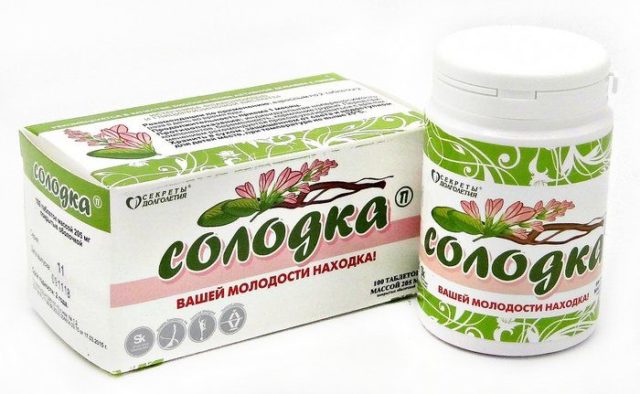
Licorice is recommended for patients with hormonal disruptions. The roots of the plant are used to treat steroid addiction. The substances that make up licorice help to remove toxins and neutralize their negative effects on the body. With its help, you can minimize the risk of developing side effects of cocaine, strychnine, drugs with aspirin, tobacco, caffeine and other substances.
Why liquorice is good for women
Licorice root contains more than 30 substances that are necessary for humans. The benefits of licorice for women are that it can be used as a remedy that:
- normalizes metabolism;
- improves the functioning of the nervous system;
- stimulates immunity;
- prevents premature aging of the body.
Liquorice is good for your health. Under the influence of the components contained in it, it is possible to normalize digestion. Licorice remedies have a positive effect on the work of organs related to the endocrine system. Licorice is used to normalize the condition of patients with hormonal disruptions. Root-based products help with severe premenstrual syndrome.
The substances that make up licorice affect the work of the adrenal glands, which are responsible for the production of hormones. In case of malfunctions in the work of these glands, the hormonal background is disrupted. As a result, women can develop polycystic ovary syndrome.This disease is characterized by increased levels of male hormones.
Is licorice possible for pregnant women and breastfeeding
Preparations, sweets, folk remedies, in the manufacture of which licorice roots were used, are not recommended for women who are carrying a child or feeding him with breast milk. Licorice is contraindicated during pregnancy. Substances contained in its composition can provoke spontaneous abortion or premature birth. In addition, licorice provokes edema, changes hormonal activity.
During lactation, it can be included in the diet after consulting a doctor, but not earlier than 2-3 months after childbirth. Failure to adhere to this recommendation can lead to a decrease in milk production due to the estrogenic and antiprolactin effects of licorice.
When drugs from licorice are included in the diet, glycyrrhizic acid enters the body. This substance gives the plant roots a sweet taste. According to British researchers, the use of glycyrrhizin during pregnancy, which is part of licorice, provokes an increase in cortisol levels in newborns. The higher the concentration of this hormone, the greater the risk of developing diabetes, hypertension and obesity.
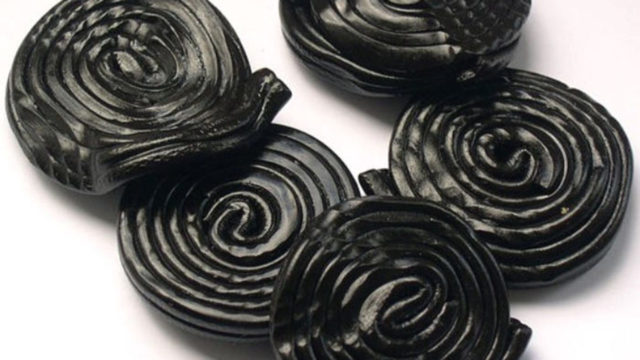
Studies have also shown that regular consumption of licorice can cause a child's hyperactivity in combination with attention deficit disorder. Substances in licorice have a negative effect on the formation of memory and intelligence.
What is useful for men
Doctors advise men to use drugs or folk remedies with licorice only as directed by a doctor. In short courses, they can be taken for inflammatory diseases of the respiratory tract and digestive organs. Licorice cleanses the intestines, liver, normalizes the condition of the prostate gland.
For children
Many kids love the taste of licorice candy. In small quantities, they can be added to the diet of babies over 3 years old. Studies have shown that children who consume licorice are less likely to suffer from gastrointestinal diseases and problems with the oral cavity.
The root of the plant stimulates the work of the body's defenses, relieves cough attacks. Also, the components that make up licorice help with colic, eating disorders.
When losing weight
According to Italian researchers, under the influence of substances contained in licorice root, the amount of fatty deposits decreases. This may be due to the fact that licorice satisfies hunger. The plant acts as a mild laxative and helps to remove toxins from the body.
Licorice normalizes the acidity of gastric juice and regulates its production. Thanks to this, all food is well digested. By normalizing the digestive tract, it will be possible to get rid of a few extra pounds. The transition to proper nutrition helps to enhance the effect.
How to take licorice
Licorice can be found in pharmacies in the form of ready-made preparations for the treatment of cough or gastrointestinal diseases. But from the dried root, you can make medicinal products at home. It is advisable to take them 2-3 times a day on an empty stomach. The dosage is selected individually depending on the diagnosis.
The recommended duration of admission for medicinal purposes is no more than 6-8 weeks. But with the use of licorice in small quantities (no more than 5 g of extract), the restriction is removed.
Infusions
For the preparation of liquorice infusion 1 tsp. powder should be poured with 200 ml of boiling water and let stand for 1 hour. The remedy should be taken in 1 tbsp. l. three times a day.
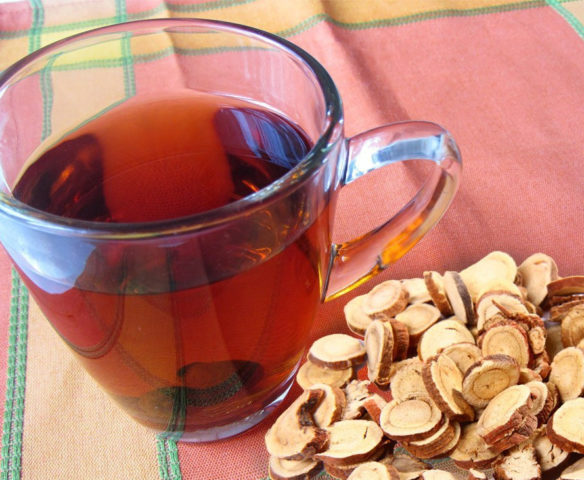
If you prepare an infusion of 2 tbsp. l. powder from licorice roots and 500 ml of warm boiled water, then you can drink it 100 ml 1-2 times a day on an empty stomach.
Tinctures
For patients with gastritis and hormonal problems caused by adrenal malfunctioning, an aqueous tincture of licorice is recommended. For its preparation 2 tsp. powder from the roots is fried in a dry frying pan and pour 400 ml of boiling water. After 8 hours, the tincture can be drunk 30-40 drops three times a day.
Alcohol tincture is recommended for raising immunity, improving the condition in bronchial asthma, eczema, psoriasis, allergies. For its preparation, 200 g of crushed root is poured into 1 liter of alcohol and insisted for 2 weeks in a dark place. You need to take it 10 drops twice a day.
Decoctions
When preparing decoctions, the healing properties of licorice are not reduced. To make it 10 g of crushed root, you need to pour 200 ml of water and hold it in a water bath for 20 minutes. Then wrap the pot with broth and let it brew for another 40 minutes. After cooling, the agent is filtered and the volume is adjusted to 200 ml. Take the broth should be 1 tbsp. l. 4-5 times a day for 10 days.
Tea
In the absence of contraindications, everyone can drink tea with licorice. A tasty and healthy drink can be prepared if you add lemon balm leaves, mint, centaury grass to the root mixed with the ground parts of the plant. You can brew the ingredients like regular tea. You should not abuse the drink, it is better to drink 1 cup a day.
Powder
Licorice powder is used for the preparation of infusions, decoctions, tinctures. The root of the plant is added to the composition of breast preparations, used in the manufacture of extracts, licorice syrups. It is not used in its pure form.
The use of licorice in cosmetology
Women can use licorice to strengthen their hair and get rid of dandruff. To do this, a decoction must be made from the crushed roots of the plant. For cooking 1 tbsp. l. licorice powder is poured into 500 ml of water and boiled in a water bath for 10 minutes.
The broth is poured over the hair and the resulting liquid is rubbed into the scalp. To achieve the best effect, the product is recommended to be left on the hair for 1 hour, and after the specified time has passed, rinse off. The procedure should be carried out twice a week for 2 months.
They also make licorice face masks. Under the influence of active substances, the severity of inflammatory processes decreases, the skin is slightly whitened. Licorice mask has a nourishing, cleansing and rejuvenating effect. Licorice powder can be mixed with a banana or diluted with milk so that the consistency of thick sour cream is obtained.
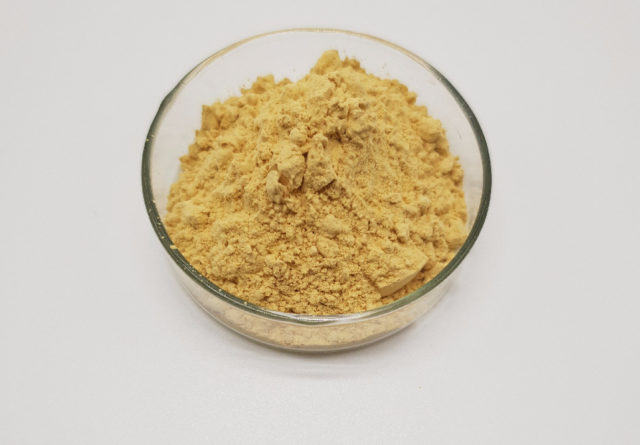
Contraindications
If there are contraindications, the use of licorice should be discarded. You can't get licorice root for people who have:
- increased activity of the adrenal glands;
- hypertension;
- heart failure;
- impaired renal function;
- individual intolerance.
Caution should be observed in the presence of hormone-dependent diseases. Due to its estrogen-like action, licorice can worsen the condition in women with ovarian, uterine or breast cancer, fibroids, and endometriosis.In men, overuse of liquorice products or candies can cause testosterone levels to drop and lead to impotence.
Why is licorice in sweets and marmalade useful and harmful?
Licorice confectionery can be used instead of pharmacy cough and certain gastrointestinal diseases. This is a low-calorie treat, but it can only be consumed in limited quantities. The recommended dose is up to 100 g per day. The human body should not get more than 100 mg of glycyrrhizic acid per day. Conscientious manufacturers of sweets should indicate the amount of this substance on the package.
Sweets and marmalade are recommended for use as a means that:
- strengthens the immune system;
- relieves cough;
- normalizes the digestive tract;
- has an antispasmodic effect.
Eating licorice confectionery in moderation prevents constipation, the development of gastritis, hemorrhoids, dermatitis, eczema. For people who get seasick on the road, candy can help cope with nausea. They also relieve heartburn.
But these properties are characteristic only for natural sweets. They should contain licorice root as an extract or juice, not a flavoring. You also need to monitor the sugar content in these confectionery products.
The harm from sweets will be if the recommended doses are not followed. Overuse of liquorice products can lead to edema, hypertension, and heart disease. Pregnant and lactating women should refuse delicacies from the plant.
Collection and procurement
For medicinal purposes, licorice root is used. The procurement of raw materials can be carried out at any time of the year. Plants older than 2-3 years are best suited for collection.
The roots are dug, cleaned of stems and soil, washed under cold water. The prepared raw materials are cut into pieces and dried in well-ventilated rooms or in the sun. In the presence of opaque bark, it must first be cleaned. The dried roots are pressed into bales.
They can be stored in cool dry rooms for several years.
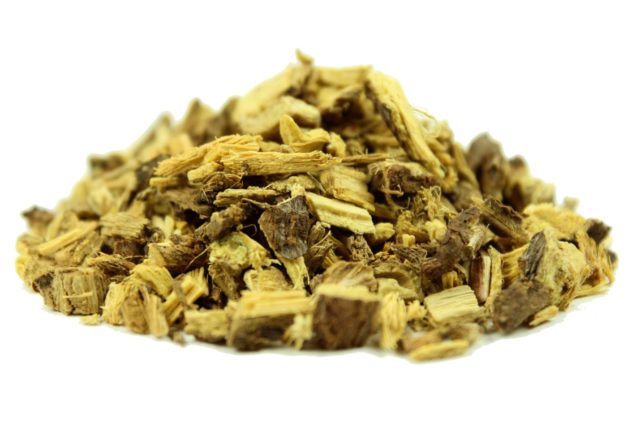
Conclusion
The benefits and harms of licorice are assessed based on the effect of this plant on the body: it has a positive effect on diseases of the respiratory system, the digestive system, but the abuse of root products can lead to health problems. Licorice is recommended for men, women and children, but before you start taking it, you should make sure that there are no contraindications.

